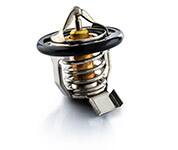Betonred Casino Login – Secure Access to Your Favorite Games_1
Table of Contents
- Betonred Casino Login – Secure Access to Your Favorite Games
- Ensuring Your Login Security at Betonred Casino
- Identifying Secure Login Practices
- Importance of Strong Password Creation
- Two-Factor Authentication: A Game-Changer
- Navigating Common Login Issues
- Resolving Forgotten Password Dilemmas
- Dealing with Account Lockouts: A Step-by-Step Guide
- Technical Glitches: When to Seek Support
Betonred Casino Login – Secure Access to Your Favorite Games
Gaining entry to an online betting platform is essential for enthusiasts eager to explore a myriad of entertainment options. The process must be straightforward yet fortified, ensuring that users can betonred enjoy their gaming pursuits with peace of mind. In a landscape where online wagering has surged, understanding the nuances of this entry mechanism becomes paramount for maximizing enjoyment and safety.
When looking to engage with an online gaming venue, individuals should first verify that their credentials are adequately protected. Utilize multi-factor authentication to bolster security layers beyond simple password entry. This extra step has proven effective in deterring unauthorized access, giving players confidence as they navigate their preferred amusements.
Furthermore, familiarizing oneself with the interface after a successful entry can greatly enhance the overall user experience. Many platforms offer personalized dashboards that highlight favorite activities, recent plays, and special promotions. Such features not only simplify navigation but also keep users engaged with relevant offers tailored to individual preferences.
It is advisable to periodically update passwords and review account activity to maintain control and oversight of personal information. By integrating best practices in digital security, players can focus on what really matters: immersing themselves in thrilling rounds that provide both excitement and potential rewards.
Ensuring Your Login Security at Betonred Casino
In today’s digital landscape, safeguarding your credentials when engaging with online platforms is paramount. Employing strong and complex passwords is a fundamental step. A robust password should include a mix of uppercase, lowercase letters, numbers, and special symbols. Aim for at least 12 characters to enhance your protection.
Two-factor authentication (2FA) adds an additional layer of defense, significantly reducing the risk of unauthorized entry. This method requires a secondary confirmation, often through a mobile application or SMS, making it harder for intruders to compromise your account.
Stay vigilant regarding phishing attempts. Be cautious of unsolicited emails or messages claiming to be from your gaming platform. Always verify the sender’s address and never click on suspicious links. Bookmark the official website to ensure you are accessing it correctly each time.
Regularly monitor your account activity for any unauthorized access. Most reputable platforms provide logs of recent logins and transactions. Immediate reporting to customer support of any suspicious activity is crucial to maintaining account integrity.
Utilize a secure connection when interacting with online platforms. Avoid public Wi-Fi for such activities, as it may expose your data to potential threats. Instead, access your account over a secured network or use a trusted VPN service.
Update your security settings periodically to adapt to evolving threats. Frequently changing your password, reviewing security questions, and enabling additional protection measures can enhance your overall safety.
Identifying Secure Login Practices
When engaging with online platforms, safeguarding personal data is paramount. One of the first steps in ensuring safety is to evaluate the methods used for authentication. Here are several key practices to follow.
Utilize two-factor authentication (2FA) to add an extra layer of protection. This method requires not only a password but also a secondary verification step, such as a text message or authentication app code. This significantly reduces the likelihood of unauthorized access.
Adopt robust passwords that include a mix of uppercase and lowercase letters, numbers, and special symbols. A password manager can assist in generating and storing complex passwords securely, minimizing the chance of using easily guessable or repeated passwords across different sites.
Regularly update passwords, ideally every three to six months, to mitigate the risk of long-term exposure. If there’s a suspicion that login credentials may have been compromised, change passwords immediately.
Be vigilant against phishing attempts. Always confirm that the website’s URL begins with “https://” and check for a padlock icon in the address bar before entering login information. This indicates that the site encrypts data transmitted between the user’s device and the server.
Monitor account activity for any unusual behavior, such as unrecognized logins or transactions. Most platforms offer activity logs that detail login times and IP addresses used. Prompt reporting of any suspicious activity can lead to faster resolution and may prevent further issues.
Educate oneself about the latest cybersecurity threats. Awareness of common tactics used by cybercriminals can help identify fraudulent schemes before they can be harmful. Stay informed by following reputable security blogs or subscribing to related news updates.
Finally, always log out of sessions after use, especially on shared or public devices. This simple action can prevent others from accessing personal accounts without explicit permission.
Importance of Strong Password Creation
Creating a robust password is a fundamental step in safeguarding personal information online. In a digital landscape filled with cyber threats, the strength of your password can mean the difference between safety and vulnerability. A strong password significantly reduces the risk of unauthorized access to sensitive accounts.
To build an effective password, incorporate a mix of uppercase and lowercase letters, numbers, and special characters. This variety adds complexity, making it more challenging for hackers to decipher your credentials. Aim for a minimum length of 12 characters; research shows that longer passwords exponentially increase security.
Utilizing phrases or sentences can enhance memorability while ensuring strength. For instance, transform a memorable quote by including numbers and symbols. Instead of “To be or not to be”, consider “2B!orN0t2B!”. Such variations not only make it easier to retain the password but also significantly bolster its resilience against brute-force attacks.
Regularly updating passwords is crucial. Set reminders to change them every three to six months. Following this practice minimizes the chances of stolen credentials being misused for extended periods. Tools like password managers can assist in generating and securely storing complex passwords, reducing the cognitive load of remembering them all.
Lastly, refrain from reusing passwords across multiple platforms. If one account is compromised, all other accounts that share the same password become susceptible to unauthorized access. Emphasizing unique passwords for every service you use will create an additional layer of protection against potential breaches.
Two-Factor Authentication: A Game-Changer
Implementing two-factor authentication (2FA) has revolutionized how users protect their online accounts. This security measure adds an extra layer of defense beyond just a password, helping to thwart unauthorized access. By requiring not only something the user knows (a password) but also something they have (a device), it significantly increases the difficulty for potential intruders.
When enabling 2FA, users are typically prompted to enter a verification code sent to their mobile device or generated by an authentication app. This process means that even if a password is compromised, the account remains shielded as long as the second factor is secure. Popular methods include SMS codes and apps like Google Authenticator or Authy, which can generate time-based one-time passwords.
Statistics show that accounts with two-factor authentication are far less likely to be breached. Cybersecurity experts estimate that the addition of 2FA can reduce the risk of account takeover by over 90%. Given the alarming rise in cyber threats, this statistic highlights the importance of adopting robust protective measures.
Users are encouraged to activate 2FA across all accounts where it is available. This approach extends beyond just gaming platforms and should be applied to emails, financial services, and social media. A proactive security strategy, including periodic password updates and the use of unique passwords for different platforms, complements the benefits of two-factor authentication.
In summary, while no system can guarantee complete security, integrating two-factor authentication substantially enhances protection. It empowers users to take control of their online safety, ensuring a more guarded experience in an increasingly digital world.
Navigating Common Login Issues
Encountering difficulties when trying to enter the platform can be frustrating. This section outlines common hurdles users face and effective solutions to resolve them.
- Incorrect Credentials: Double-check that your username and password are accurately input. Pay attention to uppercase and lowercase letters, as they matter.
- Forgotten Password: If you can’t recall your password, utilize the password recovery option. Follow the prompts to receive a reset link via email.
- Browser Compatibility: Ensure that you are using a compatible web browser. Outdated versions can hinder functionality. Consider updating to the latest version.
- Cache and Cookies: Clearing your browser’s cache and cookies can alleviate many access issues. Go to your browser settings and perform this action to refresh your session.
- Account Lockout: Multiple unsuccessful attempts might result in a temporary account lock. Wait for a specified period before trying again or contact support for assistance.
- Network Connectivity: Confirm that your internet connection is stable. A weak signal can disrupt your connection to the platform. Try resetting your modem or connecting to a different network.
- Firewall or Security Software: Sometimes, firewall settings or antimalware programs can interfere. Temporarily disable these programs to test if they are causing access issues.
- Verify your credentials and try again, ensuring accuracy in what you input.
- If you remain locked out, consider reaching out to customer support for additional help.
- After resolving the issue, consider enabling two-factor authentication if available for enhanced protection on your account.
Systematic troubleshooting can often resolve access problems quickly, allowing for a seamless entry into the entertainment options offered. Remember to maintain updated passwords and take necessary precautions for a smooth experience.
Resolving Forgotten Password Dilemmas
For many enthusiasts, losing access to account credentials can be a frustrating experience. The good news is, recovering forgotten passwords is typically straightforward. Start by locating the “Forgot Password” feature on the login interface. This option is designed to initiate the recovery process.
After clicking on the recovery link, you will likely need to provide the email address associated with the account. Ensure that you enter it accurately to avoid complications. Once submitted, check your inbox for a password reset email. Be prepared to look in the spam or junk folder if it doesn’t appear in your main inbox.
The email will usually contain a unique link or a temporary password. If a link is provided, it is essential to click it promptly, as these links often have a short validity period. Following the link will direct you to a page where you can create a new password. Choose a combination of letters, numbers, and symbols to enhance security.
In cases where the email isn’t received, double-check the entered address. Consider requesting a new password reset if needed. If issues persist, reaching out to customer support can provide further assistance. They can help verify identity and facilitate access restoration.
To prevent future dilemmas, consider utilizing a password manager. These tools store complex passwords securely and can generate strong passwords for new accounts, reducing the risk of forgetfulness. Additionally, enabling two-factor authentication can add an extra layer of protection, ensuring that even if a password is forgotten, another verification step is available.
Keep passwords confidential and avoid sharing them. Regularly updating passwords can also enhance security, minimizing the chance of unauthorized access. By implementing these strategies, you can confidently navigate the process of password recovery and ensure continued enjoyment of your gaming experiences.
Dealing with Account Lockouts: A Step-by-Step Guide
Experiencing an account lockout can be frustrating, especially when trying to engage with your preferred entertainment options. Below is a comprehensive guide to help you navigate this issue effectively.
Step 1: Identify the Cause
Before taking action, determine why the lockout occurred. Common reasons include:
- Multiple incorrect password attempts.
- Unusual activity detected by the system.
- Account verification failures.
Step 2: Wait for a Cool Down Period
If your account has been temporarily suspended due to too many failed login attempts, wait approximately 15-30 minutes before trying to log in again. This sometimes resolves the issue without further action.
Step 3: Reset Your Password
If access is still denied, consider resetting your password. Follow these steps:
- Navigate to the password recovery page.
- Enter the email associated with your account.
- Follow the link sent to your email to create a new password.
Step 4: Contact Customer Support
If you’re unable to regain entry after resetting your password, reach out to customer service. Provide them with:
| Account Username | Your unique identifier for the platform. |
| Email Address | The one linked to your account. |
| Details of Issue | Clearly describe the problem along with any error messages. |
Step 5: Verify Your Identity
Depending on the platform’s security protocols, you may need to confirm your identity. Be prepared to provide:
- Additional identification documents.
- Answers to security questions.
- Verification codes sent to your registered device.
Step 6: Follow Up
If you do not receive a response within 24 hours, a follow-up email or call can expedite assistance. Keep records of all communications for reference.
Step 7: Prevent Future Lockouts
To avoid similar situations in the future:
- Use a password manager to store your passwords securely.
- Enable two-factor authentication for added security.
- Regularly update your password and security questions.
Implement these strategies to effectively manage and resolve any account access issues while ensuring a smoother experience in the future.
Technical Glitches: When to Seek Support
Experiencing technical issues can be frustrating, especially during critical moments. Identifying when to seek assistance can make a significant difference in maintaining an enjoyable experience. Here are some situations where reaching out for help is advisable:
- Unexpected Crashes: If the application shuts down unexpectedly, it may indicate a software bug or compatibility issue. Restarting the program might help, but persistent crashes warrant contacting support.
- Login Failures: Difficulty in signing in can stem from server problems or account issues. If you’ve confirmed your credentials are correct yet still face obstacles, support can provide insights.
- Payment Processing Errors: Any issues with deposits or withdrawals should be addressed promptly. Delays or failed transactions may be indicative of technical difficulties or account restrictions.
- Graphics or Sound Problems: Poor visuals or audio can detract from the experience. If adjustments to settings do not resolve these, it may be necessary to consult customer service.
- Slow Performance: If the platform operates sluggishly, it could be a result of high traffic or browser compatibility. Troubleshooting steps may help, but if the problem persists, reaching out is recommended.
When contacting support regarding these issues, provide detailed information including:
- Your device type and operating system.
- Steps taken prior to the issue occurring.
- Any error messages displayed on screen.
- The time and date when the problem arose.
Timely communication about technical glitches is essential for a smooth and satisfying encounter. Always keep an eye out for updates or patches that may address recurring issues in the platform.


























